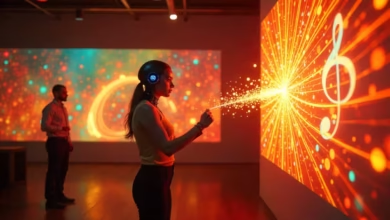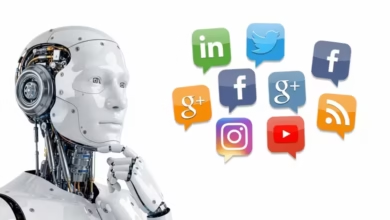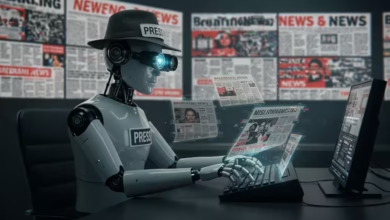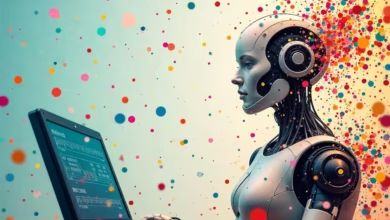AI and Creativity: Can Machines Truly Innovate?
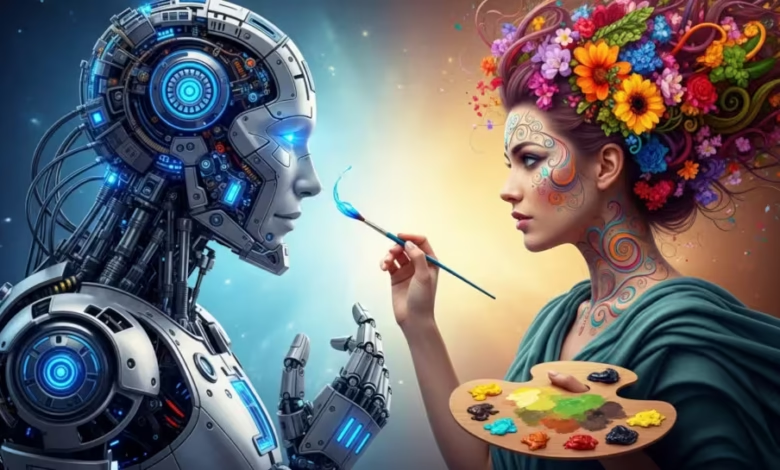
This blog post delves into the intriguing relationship between AI and creativity, examining whether machines can truly innovate. It explores the intersection of AI and creativity, showcasing how creative AI is reshaping artistic expression across various fields. The article evaluates the significant impact of AI-driven innovation on diverse industries, illustrating how technology is influencing art, music, and design. Moreover, it offers actionable takeaways for integrating AI into the creative process, helping artists and creators harness this technology effectively. Ultimately, the post invites readers to consider the potential of AI and creativity as complementary forces in the evolution of artistic endeavors.
Exploring The Intersection Of AI And Creativity
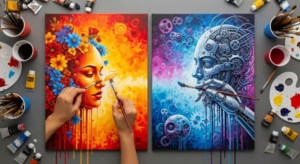
The relationship between AI and creativity is rapidly evolving, challenging traditional notions of artistic expression and innovation. As machines become more adept at generating content, the role of human artists and creators is transforming. The synergy of human-AI collaboration offers exciting opportunities for creative exploration, pushing the boundaries of what we once considered unique to human capability. With AI tools available at the fingertips of every artist, the landscape of creativity is poised for reinvention.
Key Areas Of Interest
- Art Generation: AI tools that create visuals and paintings
- Music Composition: Machines that assist in composing original music
- Literature: Automated storytelling and poetry generation
- Design: AI-driven innovations in graphic and product design
- Interactive Media: Enhancing games and virtual experiences with AI
- Collaborative Art Projects: Artists showcasing works in tandem with AI
As we delve deeper into the dimensions of AI and creativity, it becomes apparent that the future hinges on collaboration rather than competition. The potential of human-AI collaboration to yield unexpected and inspiring outcomes is immense. As artists integrate AI into their processes, they open new avenues for creativity that were previously unimaginable, ultimately enriching the artistic landscape and introducing fresh perspectives.
How Creative AI Is Transforming Artistic Expression
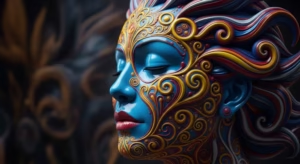
The integration of creative AI in artistic processes marks a pivotal moment in the evolution of art and technology. As we delve deeper into this transformative landscape, one cannot overlook how machine-generated art serves as a new canvas for both artists and audiences. This interplay between technology and creativity prompts vital questions about originality, authorship, and the potential of AI to complement human expression rather than replace it. The fascinating possibilities presented by AI and creativity encourage artists to experiment, pushing the boundaries of conventional artistic norms.
As artists increasingly turn to tools powered by creative AI, we witness a diverse range of outcomes. From visual art and music to literature, AI-generated content is both a collaborative partner and an innovator in its own right. This partnership can lead to unique expressions and novel art forms, broadening the spectrum of what constitutes creativity. In the realm of arts education, for instance, students are being encouraged to explore AI tools, thereby fostering a new generation of artists who view technology as integral to their creative processes.
| Type of Art | AI Tools Used | Notable Examples |
|---|---|---|
| Visual Arts | Deep Learning Algorithms | Refik Anadol’s Machine Hallucinations |
| Music Composition | Neural Networks | AIVA’s Compositions |
| Literature | Natural Language Processing | OpenAI’s GPT-3 |
| Dance Choreography | Generative Algorithms | AI Choreographers Working with Dancers |
While the emergence of machine-generated art challenges our understanding of traditional aesthetics, it also opens up a realm of possibilities for innovation. Artists can leverage AI not only as a tool for creation but also as a source of inspiration. By analyzing vast datasets, AI can propose new styles or unexpected thematic combinations that artists might not have considered, thus enhancing the creative process. As the boundaries between human and AI creativity blur, we must reconsider the notions of value and originality in artistic endeavors.
Steps For Incorporating Creative AI
- Identify areas in your art practice where AI can be beneficial.
- Research suitable AI tools and platforms relevant to your needs.
- Experiment with combining AI-generated content with your own work.
- Collaborate with technologists to explore innovative applications.
- Seek feedback from peers and audiences on the AI-driven pieces.
- Reflect on the implications of AI in your creative journey.
- Share your AI-assisted artworks to promote awareness and discussion.
The Role Of Machine-Generated Art
Machine-generated art not only serves as proof of the capabilities of artificial intelligence but also raises questions about the definition of art itself. As artists utilize these technological advancements, the conversation expands to encompass the ethical and philosophical implications surrounding creativity, authorship, and the role of AI and creativity in society. This newfound collaboration can be seen as an enrichment to traditional artistic practices rather than a replacement, allowing for deeper explorations of both human and machine creativity.
Benefits Of Innovation By AI
One of the most significant benefits of innovation by AI is its capacity to accelerate the creative process. For instance, AI can assist in generating initial drafts, visual sketches, or soundscapes that artists can then refine and personalize. This allows artists more time to focus on the conceptual aspects of their work, while the technical execution can be handled by AI. Furthermore, the accessibility of creative AI tools promotes democratization in the arts, enabling aspiring artists from diverse backgrounds to explore their creativity and share their visions with the world.
Evaluating The Impact Of Innovation By AI On Various Industries
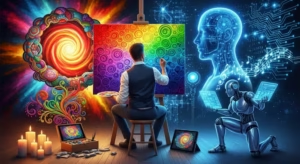
The intersection of AI and creativity is reshaping numerous sectors, prompting significant changes in the process of innovation by AI. As artificial intelligence technologies advance, their ability to collaborate with humans is leading to unprecedented creative outcomes. AI not only enhances efficiency but also opens up new avenues for original ideas, which has been vital for industries ranging from art to manufacturing. As businesses seek innovative solutions, understanding the role of human-AI collaboration becomes increasingly essential for fostering creativity.
Impact of AI Innovation Across Industries
| Industry | Type of Innovation | Notable Examples |
|---|---|---|
| Healthcare | Predictive Analytics | IBM Watson Health |
| Entertainment | Content Creation | OpenAI’s GPT-3 |
| Fashion | Design Generation | Stitch Fix Virtual Stylist |
| Finance | Algorithmic Trading | Numerai |
With the vast capabilities of AI, many industries are witnessing creative breakthroughs that merge technology with human insight. For instance, in the field of design, companies are utilizing AI algorithms to identify trends and create new fashion lines more swiftly than ever before. Moreover, in entertainment, AI is being harnessed to craft unique narratives and generate musical compositions, demonstrating that machines can indeed play a pivotal part in the creative process. Yet, this raises the question of authenticity and whether AI’s contributions can truly be considered as innovative, or are they merely iterations of existing ideas.
Advantages And Disadvantages
- Advantages: Enhanced efficiency in creative processes.
- Advantages: Ability to analyze vast data sets for trend identification.
- Disadvantages: Potential loss of unique human expression.
- Disadvantages: Ethical concerns regarding ownership of AI-generated content.
- Advantages: Facilitation of new creative collaborations.
- Disadvantages: Dependency on technology may hinder traditional skills.
In evaluating the impact of innovation by AI on industries, we find a landscape where both challenges and opportunities coexist. The success of human-AI collaboration lies in finding a balance that leverages the strengths of both. As we analyze various case studies of AI innovations, we can see how effective partnerships can lead to revolutionary outcomes.
Case Studies Of AI Innovations
Case studies provide valuable insights into the transformative effects of AI across various sectors. In healthcare, for example, AI systems are now utilized for diagnostics, significantly improving patient outcomes through predictive analytics. Similarly, in the realm of art, platforms like DALL-E illustrate how AI can generate original images from textual descriptions, showcasing a fundamental shift in creative expression. These instances not only highlight the advancements brought by AI but also emphasize the importance of ongoing collaboration between humans and machines in driving innovation.
Actionable Takeaways For Embracing AI In Your Creative Process
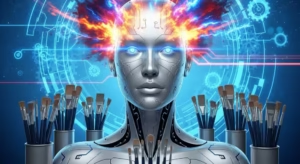
Integrating AI and creativity into your artistic workflow can significantly enhance your output and open new avenues for innovation. As artists, designers, and creators, leveraging creative AI allows you to explore uncharted territories of your imagination while also simplifying repetitive tasks. By embracing this technology, you can focus more on the essence of your creativity rather than mundane details. The challenge lies in knowing how to effectively incorporate AI tools without relinquishing your authenticity as a creator.
Recommended Steps To Implement AI
- Identify specific areas within your creative process where AI can provide assistance.
- Research available creative AI tools that fit your artistic needs and budget.
- Start small by integrating AI in minor projects to familiarize yourself with its capabilities.
- Regularly assess the impact of AI on your workflow and adapt strategies accordingly.
- Engage with online communities discussing AI and creativity for insights and support.
- Experiment with combining traditional techniques with AI-generated outputs to develop a unique style.
As you navigate your creative journey, remember that the goal is not to replace your creativity but to enhance it. By leveraging the advantages of creative AI, you empower yourself to think beyond conventional boundaries and redefine what it means to innovate. This synergy between technology and artistry can lead to groundbreaking results that showcase the best of both worlds. Embrace this transformative process, and let AI catalyze your creative evolution.
For similar articles, please visit: AI in Art, Creativity & Media
Homepage / humanaifuture.com

